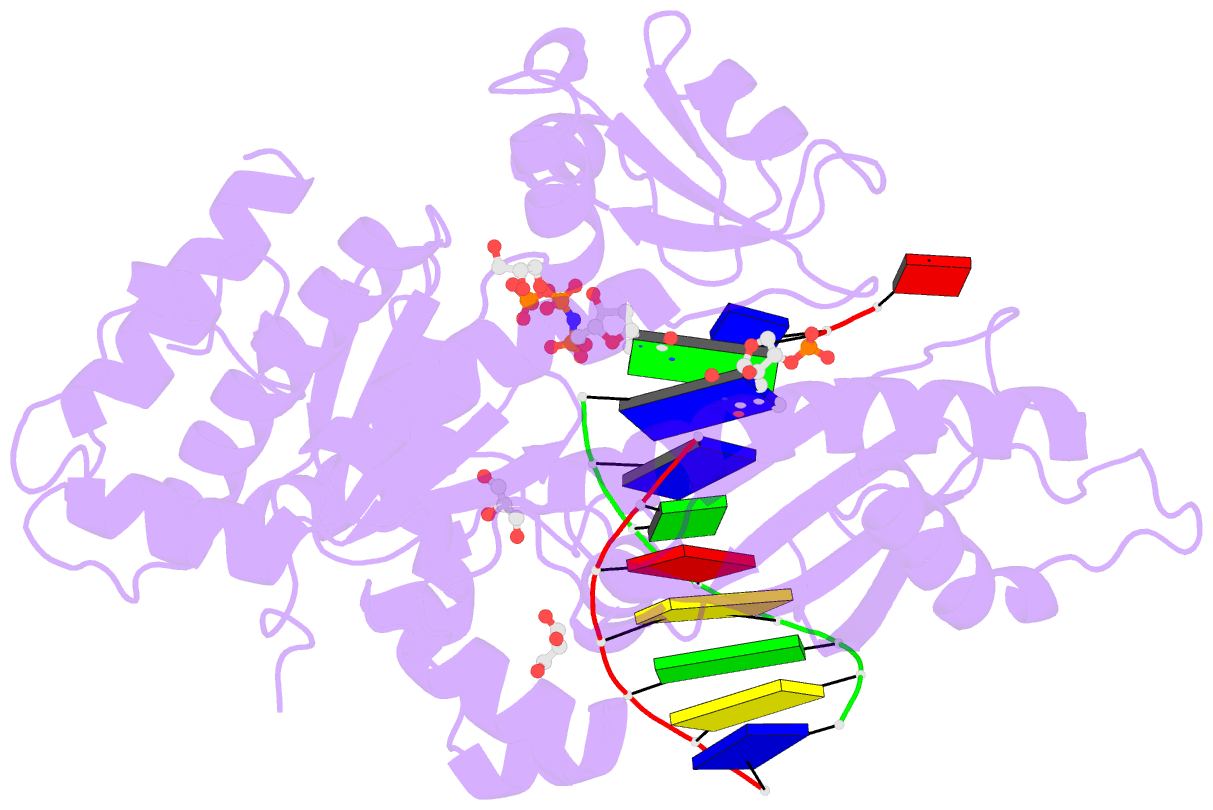Summary information and primary citation
- PDB-id
- 9ci9; SNAP-derived features in text and JSON formats;
DNAproDB
- Class
- transferase-DNA
- Method
- X-ray (2.09 Å)
- Summary
- Crystal structure of human polymerase eta with incoming dcmpnpp nucleotide across threofuranosyl thymidine in DNA template at extension stage
- Reference
- Tomar R, Ghodke PP, Patra A, Smyth E, Pontarelli A, Copp W, Guengerich FP, Chaput JC, Wilds CJ, Stone MP, Egli M (2024): "DNA Replication across alpha-l-(3'-2')-Threofuranosyl Nucleotides Mediated by Human DNA Polymerase eta." Biochemistry, 63, 2425-2439. doi: 10.1021/acs.biochem.4c00387.
- Abstract
- α-l-(3'-2')-Threofuranosyl nucleic acid (TNA) pairs with itself, cross-pairs with DNA and RNA, and shows promise as a tool in synthetic genetics, diagnostics, and oligonucleotide therapeutics. We studied in vitro primer insertion and extension reactions catalyzed by human trans-lesion synthesis (TLS) DNA polymerase η (hPol η) opposite a TNA-modified template strand without and in combination with O4-alkyl thymine lesions. Across TNA-T (tT), hPol η inserted mostly dAMP and dGMP, dTMP and dCMP with lower efficiencies, followed by extension of the primer to a full-length product. hPol η inserted dAMP opposite O4-methyl and -ethyl analogs of tT, albeit with reduced efficiencies relative to tT. Crystal structures of ternary hPol η complexes with template tT and O4-methyl tT at the insertion and extension stages demonstrated that the shorter backbone and different connectivity of TNA compared to DNA (3' → 2' versus 5' → 3', respectively) result in local differences in sugar orientations, adjacent phosphate spacings, and directions of glycosidic bonds. The 3'-OH of the primer's terminal thymine was positioned at 3.4 Å on average from the α-phosphate of the incoming dNTP, consistent with insertion opposite and extension past the TNA residue by hPol η. Conversely, the crystal structure of a ternary hPol η·DNA·tTTP complex revealed that the primer's terminal 3'-OH was too distant from the tTTP α-phosphate, consistent with the inability of the polymerase to incorporate TNA. Overall, our study provides a better understanding of the tolerance of a TLS DNA polymerase vis-à-vis unnatural nucleotides in the template and as the incoming nucleoside triphosphate.





